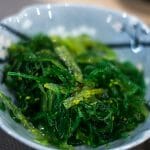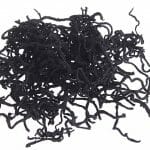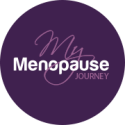Sea vegetables are the Earth’s most nutritious food. And because our world is greatly occupied with water, there are tons of super healthy edible plants that we are yet to discover! Some superfoods can be the solution to illnesses and body complications humanity has been trying to obviate. A study has found out that seaweeds have added favorable effects to the metabolism of estrogen and phytoestrogens. Although the study needs further clinical trials to support the claim, the result may now suggest that sea vegetables can be useful for menopause.
Different Types of Sea Vegetables

Bladderwrack
Bladderwrack is also known as red focus or black tang. These brown algae grow at the coasts of the Pacific, Atlantic, and North, Baltic Seas. It is considered the world’s greatest source of Iodine and has been used in Europe since the early 18th century for the treatment of goiter, an illness of the thyroid gland. The perennial kelp has a fishy taste, which is suitable for dishes with flavors of the sea. Bladderwrack is also sometimes enjoyed as tea. Aside from its large amounts of Iodine, it is also rich in fiber and contains traces of calcium, magnesium, protein, potassium, selenium, zinc, iron, phosphorous, chlorophyll, bromine, and vitamin C.


Arame
Arame, one of the brown algae, is also known as sea oak. Arame is commonly harvested in the oceans of Japan and Korea. But more and more stores in the West are retailing it as a dried plant. Arame seaweeds are included in many Japanese dishes, as it has a sweet taste, which makes it a flexible ingredient. It could be eaten as appetizers, garnish on muffin tops, salads, casseroles and toasted dishes. It is also a good substitute for pasta and noodles.
Arame is also rich in Iodine, calcium, iron and protein. It also has lignans, a source of phytoestrogens in plants. Individuals who are low in estrogen, such as menopausal women, can benefit from these components since they can convert to estrogen in the body. Lignans also act as antioxidants that remove harmful toxins in the body and could even prevent cancer. Arame is also good for the skin. Some facial masks contain Arame residues that relax the skin and rejuvenate the cells.


Kombu
Kombu, a type of kelp, is one of the most popular edible seaweed in East Asia. Also known as haidai or dashima, this brown seaweed is mainly harvested in Japan and South Korea. Japan makes warming stock soups of Kombu called dashi. While others sell Kombu as dried or pickled. A known fermented tea, called kombucha, can also be made using kombu. This sea plant could as well be a good substitute for fresh spinach pasta or lasagna.


Kombu has anti-clotting properties, termed PLG. It is a polysaccharide fraction that delays blood clotting but does not prolong the bleeding time. PLG could benefit those who have heart problems or complications in the consistency of blood. It also has calcium, iron, and iodine and lowers the body’s bad cholesterol. It has glutamic acid, which is good for the mind, muscles and promotes prostate health. Kombu also contains potassium, magnesium, zinc, vitamins B, C, D, and E, and germanium (good for skin healing).
Wakame
Wakame is a slippery, green seaweed that has a mild sweet taste. It looks black when dry, but turns green when soaked. It is native to the cold coasts of Japan, China and Korea, but gets exported to different parts of the globe. Wakame is mostly included in East Asian dishes and soups like miso, miyeok guk, and tofu salad.
Wakame contains quantities of manganese, copper, selenium, zinc, phosphorous, potassium, and traces of vitamins A, B, C, E, & K. It is rich in iodine, calcium, magnesium, protein and iron. It also contains a source of omega-3 fatty acid called Eicosapentaenoic acid, which protects us from depression, anxiety, memory loss, and rheumatoid arthritis. Wakame could as well initiate weight loss due to its fiber, and low amount of calories and fats. It also has fucoxanthin, a fat-burning component that stimulates the liver to produce DHA, which burns and reduces bad cholesterol.
Learn how to prepare a simple Orange Wakame Salad from this video by Christy Morgan. (3:03 minutes)


Hijiki


Hijiki is a seaweed from the East that has a strong flavor. It is very low calorie but high in nutrients such as iron, magnesium, calcium, potassium, and vitamin A. it is also rich in fiber that would help you feel full and eliminates undigested waste in the intestine. It also renews the skin and boosts the immune system. Hijiki is either boiled or roasted. It is mostly included in rice toppings of some Eastern cuisine. And good to be made into a vegetable dish with other greens like cabbage, carrots and onions.
Nori
Nori is the greenish, compressed seaweeds we can find on sushi rolls. It is the wrap of many Japanese rice cakes and has a salty taste. It could also be used as a garnish or an added flavor to many soup dishes or noodles, like ramen. Though Nori is commonly harvested at the coasts of several Eastern countries. Nori is distributed to many parts of the world, including the West.
Just like other sea vegetables, Nori absorbs nutrients directly to its cell wall. That’s why it contains nutrients like vitamin A, potassium, phosphorous, zinc, and vitamins K, C, and E. it is also rich in protein, dietary fiber, iron, and iodine. Nori also acts as an anti-oxidant, which helps prevent tumor growth like cancer. And can also improve bone health due to the high contents of calcium and magnesium.
Aside from the traditional sushi wrap that it’s used for, you can also use this sea vegetable in a simple sandwich recipe! Yes, you read that right! Check out this video below!
Raw Vegan NORI Energy Wrap (6.55 minutes)


Irish Moss
Irish moss, or also known as Carrageenan, is a type of red algae that varies from yellow-green, or purple-red. It contains tons of minerals including sulfur, iodine, iron, selenium, manganese, zinc, calcium and magnesium. It is also rich in protein and has been used to treat many illnesses like cough, bronchitis, influenza, gastritis, thyroid problems and halitosis. Irish moss is usually used as an alternative to gelatin for puddings, creams, and deserts with mousse. It is also used as a thickener to several soups and sauces. This red alga, which is mostly found in the Atlantic Ocean, could also be a strengthening food after sickness.


Spirulina
Spirulina is a blue-green microalgae found in freshwater. It is very rich in protein, which makes up almost 65% of its plant. It also contains tons of vitamins and minerals like potassium, calcium, iron, magnesium and vitamin B12. Spirulina also has omega-3 fatty acids and has antioxidants. Spirulina is a superfood that strengthens the immune system and prevents anemia in the elderly. It commonly grows in certain parts of Central America, Chile and Asia. This blue-green alga is enjoyed as smoothies, juices, and several pastries. It is usually sold as a powder, but could also be purchased as a supplement.
Read a more comprehensive article on Spirulina from this website too!


Chlorella
Chlorella is always mistaken as Spirulina because they are both blue-green microalgae that grow in freshwater. The main difference between the two is that chlorella lived thousands of years earlier than spirulina and did not possess a hard cell wall that makes it more of a plant than an alga. Chlorella also has much more chlorophyll than Spirulina, and is a much potent anti-antioxidant, around four times better. Moreover, it comprises 60% proteins, and the rest are minerals, vitamins, amino acids, and omega-3 fatty acids. Chlorella has antibiotic properties that could treat several symptoms caused by harmful bacteria. Both smoothies and juices can be made from the dried powder of Chlorella. Some supplements are also available at health stores.
Read a more comprehensive article on Chlorella from this website too!
Where to Find Sea Vegetables
Although most of the sea vegetables are mainly found in the Asian regions, it is great to know that there are also widely available all over the world today! You can visit your local Asian food stores to find these items conveniently. Or you can also have the options below.
Do you know any other sea vegetables? We’d like to hear from you! Share it with us below.
Also, do not forget to like us on Facebook and follow us on Twitter! Happy journey!






Awesome ! :